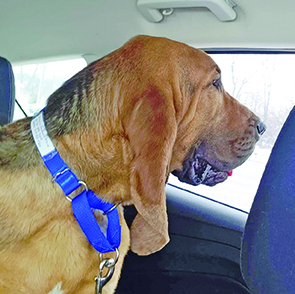Artificial turf, new lighting for youth teams
LINWOOD — Do voters want the city to spend $2.6 million on a turf field and lighting upgrades to All Wars Memorial Park with no increase in taxes? That’s what Linwood City Council is asking residents on the ballot this Election Day.
According to an overview of the project provided by the city, “the safety of our young athletes, as well as our pride in the facilities around the city, should be a top priority for every citizen that calls Linwood home.”
The document states those things are being questioned due to the poor condition of the city’s public playing fields.
It outlines the proposal to upgrade the football/lacrosse field to a synthetic turf multipurpose playing surface and upgrade the lighting system.
“City Council has heard numerous complaints over the years made by the local sports organization presidents, boards, parents and players regarding the state of the fields they pay to use and renovate almost annually,” it states.
Due to an increase in maintenance costs, complaints and safety issues, City Council decided to poll voters with a nonbinding referendum to the ballot.
The question asks whether the city should install an artificial turf field for an estimated cost of $1.6 million while upgrading the existing lighting system to high-efficiency LED bulbs for the entire park at an estimated cost of $1 million. The city would issue general obligation bonds in the amount of $2.6 million to finance the cost.
Project details
According to the document, the estimated useful life of the artificial turf field is 10 to 12 years. The city and sports organizations pay more than $75,000 every year to maintain the existing grass fields.
It further states that upgrades to existing lighting will be necessary in three to five years. The lights were installed in 2000 and have a life expectancy of 25 years.
“It will be necessary to install new lighting by the year 2025 regardless of the installation of a new artificial turf field,” it states.
The turf project would entail planning, clearing and grading, drainage, installation of 130,000 square feet of Revolution 360 Field Turf, home and away bleachers with concrete pads, cleanup landscaping and restoration.
Lighting upgrades would include the planning and installation of high-efficiency LED fixtures with “Total Light Control Technology.”
The document states the synthetic turf field and lighting are necessary because the field conditions, combined with the limited public field space available, have pushed youth sports organizations to constantly renovate their playing areas, spending tens of thousands of dollars on repairs “way too often.”
“These expenses, when the organizations can’t afford the necessary repairs, ultimately fall to the city to pay in order to keep the fields open for our children. It is estimated that the city alone pays approximately $75,000 per year to renovate and maintain the fields,” it states.
As interest and participation in youth sports continue to increase, the use and stress on the fields have increased as well.
“This leaves little to no time for fields to adequately rest in order to replenish themselves and be safe and playable for the following season,” the document states.
Teams could practice and play on a turf field daily, in turn allowing the other fields to be properly rested.
“This also reduces the amount of taxpayer money spent on renovating fields with expensive sod, as they could be seeded for much less money and then rested properly in the fall as is recommended,” it states.
Concerning the lighting, the document states repairs to the old system have become necessary more often as it nears its estimated life expectancy.
“The new system will use high-efficiency LED bulbs that reduce light pollution around the intended lit area, as well as reduces the cost of electricity to turn on and run the lights,” it states.
No increase in taxes
The document states that property taxes “are not anticipated to increase as a result of this project being approved.”
Due to the timing of the project and as a result of other debt service payments set to be paid off at the conclusion of 2023 and 2024, the total debt service payments for 2024 and beyond would be lower than they are currently, even with a new $2.6 million bond for this project, the document states.
An amortization schedule for the bond at current rates available to government agencies would cost an average of about $183,000 per year in debt service payments, according to the document. The bond payment for this project would start in 2023 and would be significantly less than the total debt service payments that are set to be paid off in 2023 and beyond.
What it does not state is that the lower debt service could free up money to be used elsewhere in the budget, possibly lowering taxes. So, while there may be no tax increase, homeowners’ taxes certainly would pay for the project.
Lower maintenance fees
The document states that maintenance costs would not increase as a result of the installation of the turf and new lights.
It states that each sports organization pays a field usage fee based on the number of athletes that register to play. Linwood residents receive a discount on that fee as they pay taxes directly to the city.
“Revenue from this fee will be used to pay for the annual maintenance of the turf, which is approximately $10,000 per year for grooming twice a year and other maintenance as required,” it states.
The city is collecting about $50,000 per year in usage fees, the document states. The remaining fees collected and not spent on maintenance each year could be put aside for when the turf needs to be resurfaced.
The opportunity to rest fields while the turf is used on a daily basis would lower maintenance costs on those fields significantly, it states.
In the past, the city and sports organizations have had to re-sod entire fields, sometimes paying as much as $90,000 when they become unplayable. With a turf field being primarily used, the other fields would no longer be played on every day and normal seeding and rest should allow for the field to replenish itself without having to re-sod, the document states.
A turf surface would save the city money by reducing the need for watering, sprinkler repairs, chemical treatments, mowing and lining fields with paint on a weekly basis.
In addition, general costs for lighting should also decrease with the use of high-efficiency LED bulbs.
Maintenance costs for repairing and changing burnt-out bulbs will decrease in the short-term as well, as the LED bulbs will be brand new and have a much longer useful life than the current bulbs.
The Total Light Control Technology allows targeted lighting with pinpoint precision, dramatically cutting off any impact on the surrounding area, the document states.
Mainland United Soccer Association, Linwood Panthers Football and Cheer, Mainland Youth Lacrosse Club and Mainland Youth Flag Football would have preferential treatment when scheduling games, practices and special events on the turf surface.
“The organizations are funding a large percentage of the total cost and maintenance of the field through the field usage fee,” it states.
With prior approval from the Board of Recreation, Belhaven Middle School’s sports teams may use the field as requested, assuming it does not conflict with any of the other youth sports organizations’ requests. The Belhaven soccer teams use the upper field near Shore Road for their practices and home games.
Any third-party organization that has gone through the required process of requesting usage of the field by getting approval from the Board of Recreation may also use it.
This process includes completing an application, providing valid insurance coverage and paying a fee.
Park Director Tim Donovan said the turf field would replace the football field but be oriented east-west rather than north-south, opening up more room for the baseball field.
“I deal a lot with the field usage applications and the local sports organization presidents,” Donovan said. “I hear a lot of their complaints and issues about splitting time with other organizations.”
He said it’s a daunting task to schedule practices and games even with a full slate of perfect fields, which the city does not have. Add into that inclement weather and special events, and it becomes an overwhelming job.
Donovan said one of the main issues is that youth sports continue to increase in popularity but the facility stays the same size.
“We are running out of places to put kids that practice three to four times a week plus games,” Donovan said, noting the teams prefer to practice on their game field, leading to quicker deterioration.
“The idea was that if we could have at least one turf field, it would give the other fields time to rest as needed,” Donovan said, noting then they could be reseeded rather than resodded at a much lower cost.
Donovan said if the referendum passes, the city would start the planning process, engineering and drainage work as soon as possible.
“That way it can get out to bid and we are hoping, fingers crossed, have it installed over summer and open for the fall season,” Donovan said.
He said the proposal has the backing of the sports organizations.
“Right now, the organization presidents in town are all on the same page,” he said.
Fieldhouse project delayed
City Council awarded a contract March 23 to William McClees Architecture of Somers Point to design a fieldhouse to replace the aging multipurpose structure in the center of the park.
City Councilman Eric Ford, who oversees planning, engineering and development, said at the time the project would involve demolition of the existing one-story building and construction of a two-story building. Ford said the location amid the sports fields and playgrounds limits the size of new construction.
“We found a building that works and we’re excited about it,” Ford said.
The father of three athletes knows the complex well, having spent many an hour there over more than a decade.
“It’s time to reinvest in that park,” Ford said.
According to a letter to the city from McClees, the project will be designed to provide storage space, restrooms and concession facilities to support the soccer and football programs.
McClees will provide schematic design documents — including floor plans, preliminary ceiling plans, exterior elevations and design study sketches — as well as construction documents.
The design will incorporate environmentally sensitive aspects where practical financially.
Other services will include advice on bidding the construction work.
Ford said the second floor would have storage and meeting space, as well as an area for announcing football games.
The goal was to have the building completed by winter but it now is expected to be completed by spring.
Donovan said final plans may be altered a little bit to deal with the orientation of the turf field, if approved
“It would be fantastic if the turf passes, the fieldhouse is done in spring, the field this summer and by fall of next year have a completely new facility down there to give a much-needed facelift to the park,” he said.
By CRAIG D. SCHENCK/Sentinel staff



